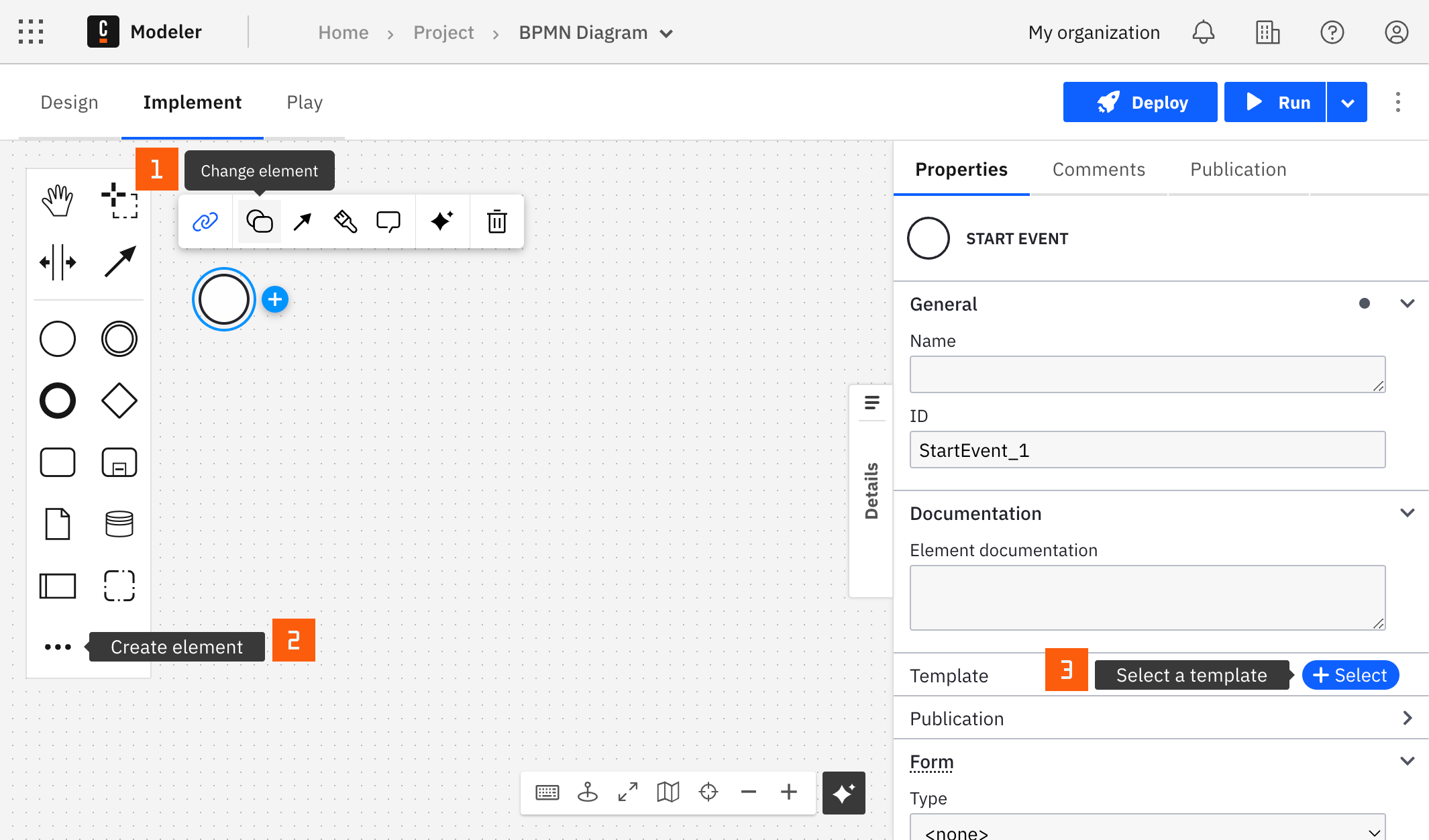Use an outbound connector
Outbound connectors allow workflows to trigger external systems or services.
Creating the BPMN task
You can apply a connector to a task or event via the append menu. For example:
- From the canvas: Select an element and click the Change element icon to change an existing element, or use the append feature to add a new element to the diagram.
- From the properties panel: Navigate to the Template section and click Select.
- From the side palette: Click the Create element icon.

After you have applied a connector to your element, follow the configuration steps or see using connectors to learn more.
Configuring the outbound connector
Once a connector task is selected, the available configuration is visible in the properties panel on the right side. The required fields are highlighted with an error message.
Fields in the properties panel marked with an equals sign inside a circle indicate that FEEL can be used to configure the property. If the icon includes an equals sign marked with a star, FEEL is required. Using FEEL allows the user to reference process data from variables in the expression to configure the properties.
Each connector defines its own set of properties you can fill in. Find the details for connectors provided by Camunda in the out-of-the-box connectors documentation.
Retries
By default, connector execution is repeated 3 times if execution fails. The retries are executed sequentially without delays.
To change the default retries value, edit the BPMN XML file and set the retries attribute at the zeebe:taskDefinition. For example:
...
<zeebe:taskDefinition type="io.camunda:http-json:1" retries="12" />
...
The connector runtime also supports custom intervals between retries (retry backoff). To configure a custom retry interval, you need to add a special property to the connector element template. The property must bind to the retryBackoff task header, and the value must be a valid ISO 8601 duration.
{
"value": "PT30S",
"binding": {
"key": "retryBackoff",
"type": "zeebe:taskHeader"
},
"type": "Hidden"
}
In the example above, the retry attempts will be spaced 30 seconds apart, instead of the default behavior of retrying immediately.
If necessary, the retry backoff property can be made visible and editable in the properties panel by changing the property type to String.
retryBackoff is a reserved task header key recognized by the connector runtime. You don't need to handle this input in your connector implementation, as the runtime handles it automatically for all outbound connectors.
Downloading documents
To download documents without an additional step, review uploading a document when using connectors.